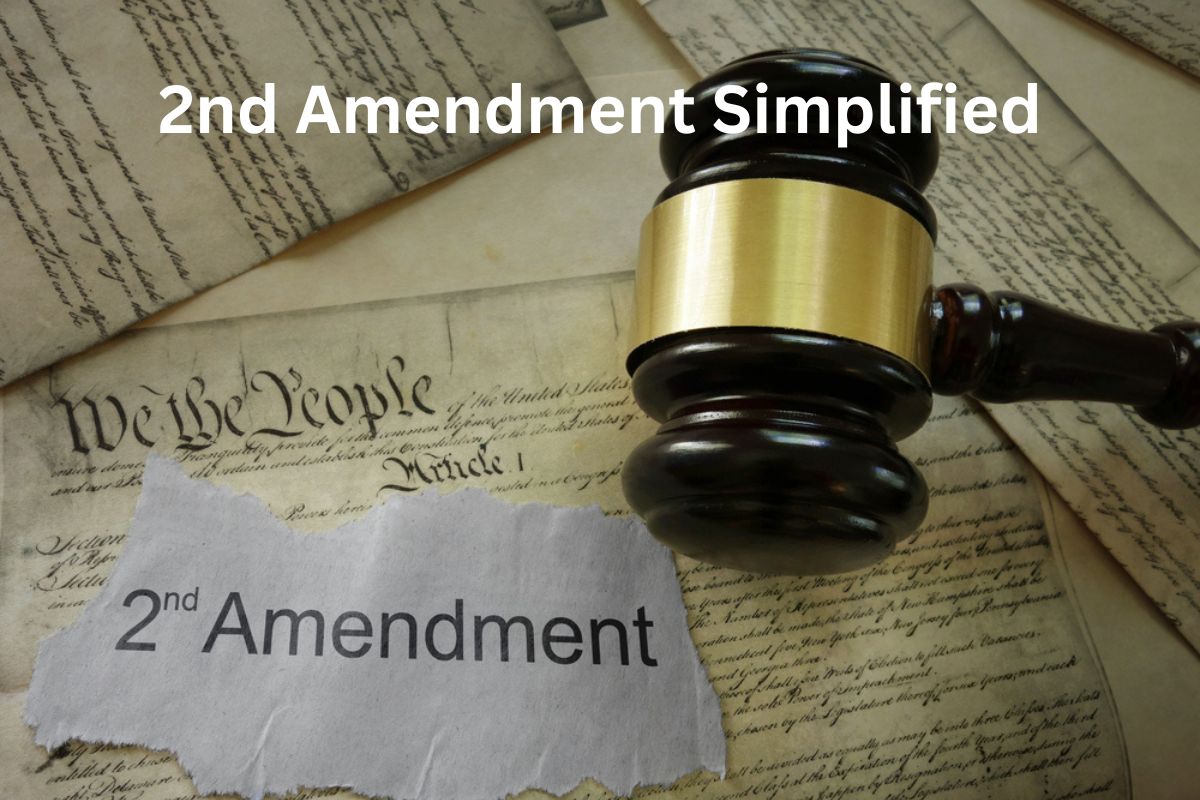The Second Amendment is the part of the United States Constitution that protects the right of citizens to keep and bear arms.
It states:
“A well regulated Militia, being necessary to the security of a free State, the right of the people to keep and bear Arms, shall not be infringed.”
It is important for people to understand the Second Amendment, as it is a key part of American law and culture, and its interpretation can have significant implications for public policy and public safety.
2nd Amendment Simplified
The Second Amendment is part of the United States Constitution that protects the right of citizens to own and carry firearms. It was added to the Constitution to allow citizens to maintain a well-regulated militia, which was seen as necessary for the security of a free state.
The right to bear arms is not absolute, and reasonable limitations on gun ownership are allowed. The debate over gun control laws centers on how to balance the right to bear arms with the need to ensure public safety.
Historical Context
The Bill of Rights is the collective name for the first ten amendments to the United States Constitution, which were ratified in 1791. These amendments were added to the Constitution to protect individual liberties and limit the power of the federal government.
The purpose of the Second Amendment: The Second Amendment was added to the Bill of Rights to protect the right of citizens to bear arms for the purpose of maintaining a well-regulated militia, which was seen as necessary for the security of a free state.
Also Read: 3rd Amendment Simplified
In early America, the militia was a group of citizens who were required to keep and maintain their own weapons and be ready to serve in the defense of their community or state. The militia was seen as a safeguard against tyranny and a way to ensure the security of the fledgling nation.
The Right to Bear Arms
he right to bear arms refers to the individual right of citizens to possess and carry firearms for self-defense, hunting, sport, or other lawful purposes. This right is protected by the Second Amendment and has been affirmed by the Supreme Court in recent years.
Interpretation of the Second Amendment
There are two main schools of thought on how to interpret the Second Amendment, the individual rights view and the collective rights view:
- The individual rights view holds that the Second Amendment protects an individual’s right to own firearms for personal use
- The collective rights view holds that the Second Amendment only protects the right of states to maintain militias.
While the right to bear arms is protected by the Constitution, it is not an absolute right.
The Supreme Court has recognized that reasonable limitations on the right to bear arms are permissible, such as restrictions on the possession of firearms by felons or the mentally ill, or bans on certain types of weapons.
Current Debates
1. Gun control laws
The debate over gun control laws centers on the question of how to balance the right to bear arms with the need to ensure public safety.
Advocates of stricter gun control argue that tighter regulations are necessary to reduce gun violence, while opponents argue that such regulations infringe on the Second Amendment rights of law-abiding citizens.
2. Interpretation of the Second Amendment
The different interpretations of the Second Amendment play a key role in the debate over gun control laws, with advocates on both sides arguing that their position is supported by the text and history of the Second Amendment.
3. Mass shootings and gun violence
Mass shootings and gun violence have become a major public concern in recent years, and have contributed to calls for stricter gun control laws.
Proponents of gun control argue that tighter regulations could help reduce these incidents, while opponents argue that the problem lies elsewhere, such as with mental health issues or a lack of law enforcement.
Conclusion
Importance of balanced approach to the Second Amendment: It is important to take a balanced approach to the Second Amendment that takes into account both the right to bear arms and the need for public safety.
This may involve reasonable regulations on firearms ownership and use, while still protecting the individual rights of law-abiding citizens
